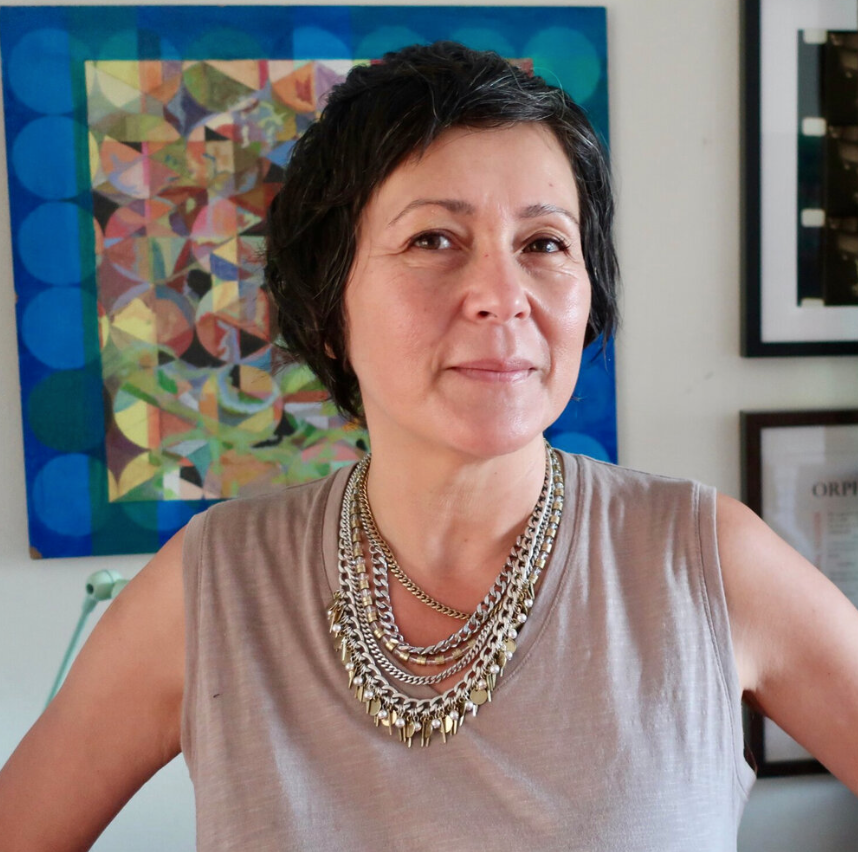
Born in the Mekong Delta, Hoa Nguyen was raised and educated in the United States and has lived in Canada since 2011. Hoa has had the privilege to work and teach all over the United States and Canada, and share her unique perspective through her poetry. She is the author of several books including As Long As Trees Last, Red Juice: Poems 1998-2008, and Violet Energy Ingots which received a 2017 Griffin Prize nomination. Her fifth book of poems, A Thousand Times You Lose Your Treasure was named a finalist for a National Book Award for Poetry and the Governor General’s Literary Award and has garnered additional support from Publishers Weekly, The Poetry Foundation, Ms Magazine, and the Los Angeles Review of Books. Her writing has been promoted by such outlets as Granta, PEN American Center, CBC Books, Boston Review, The Best Canadian Poetry series, Poetry, The Walrus, and Pleiades. In 2019, she was nominated for a Neustadt International Prize for Literature, a prestigious international literary award often compared with the Nobel Prize in Literature.
A well-regarded and popular teacher of creative writing, she has more than twenty years’ experience teaching across genres in intimate workshops and large lectures in community, undergraduate, and graduate settings. She has performed, lectured, and taught in colleges, universities, and literary organizations including Princeton University, the Chautauqua Institute, Brown University, St. Mary’s College of California, and the Banff Centre for the Arts. She has nine years of experience teaching undergraduate courses in fiction, creative non-fiction, and poetry to a diverse student population at the G. Raymond Chang School of Continuing Education and Ryerson University. At the graduate level, she has taught as associated faculty for the low-residency MFA programs at Miami University and the Milton Avery Graduate School of the Arts at Bard College MFA Program where she was named Co-Chair of Writing in 2020. Since 2017, she has served as Associated Faculty of the University of Guelph Creative Writing MFA program.
Lisa Olstein: What questions or obsessions urged this particular work into being or revealed themselves in it?
Hoa Nguyen: At the center of the book was the inspiration to evoke my mother’s life as a celebrated stunt motorcycle rider who leaves Vietnam at the height of the war with her mixed-race child (me) to never return “home”. I wanted to tell her story because it was the story of someone who lived a life that took great risks, including daring to live a life outside of rigid gendered boundaries of acceptability. But I wanted to tell her story as a poet and that prompted me to tap into a story song space, thinking about popular song, folk songs, ballad traditions that are also share a relationship to poetry and are storylike, ones that tell both a specific story and a larger story.
LO: “Form sets the thought free,” says Anne Carson, and I believe her. How did form and thought co-evolve in the unfolding of this work?
HN: My modes or forms were many. Storytelling had a relationship to folk or story songs and the poems assemble polyphony of voices and source. Materials included letters, song lyrics, news clippings, magazine adverts, war reports, ghost stories, cultural instruction guides, language textbook lessons, and transcripts of US psychological warfare tapes and a folk opera. In the poems that share story, I sought a narration to invoke with forms of attention and assembly. Working inside of the shape of the poems and the book felt like a kind of mapping, contextualizing with care.
The whole really was considered a complex system or cartography and it took a lot of careful mapping. I was guided by something that fellow first decan Aquarius Jack Spicer said, “Words must be led across time, not preserved against it”. Also “A poet is a time mechanic, not an embalmer” Tarot lended an imago or image pattern for the poems, motifs I could mix with other forms or modes. The poems enact a refusal to participate in a trauma parade for the benefit of the white gaze. To seek outside approval—I’m more interested in transformation, evasion, and speaking and singing across centuries of language song/story/poetry/music. \
LO: As a medium somewhere between time-based and static, poetry engages temporality in a fascinating range of ways. How does time operate inside this work and across the experience it creates?
HN: I was interested in non linearity and a-chronistic time: time as a process, and time folding over onto itself, obscuring and revealing. One of my practices is to work with tools of chance operations and divinatory systems like the tarot and I Ching as a way to think outside of western constructs of time and connect to improvisational possibility, to read meaning and sign multidimensionally and enact that texture in the space of the poem.
LO: How did the book’s structure unveil itself to you? What emerged to shape its architecture?
HN: There’s a relationship to structure that developed over time, with distance, disassembly, and accumulation. The shape emerged with a relationship to the individual poem as a poem as well toward the whole. Managing a system that includes short song forms like sonnets and longer song forms that bear more relationship to what story-songs, folk song, and talk songs. There’s also a relationship to orality with ghost stories. I paid attention to the total, the sequencing, and ‘kinds’ of poems, various modes or pieces of information or tones of address.
